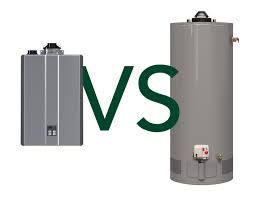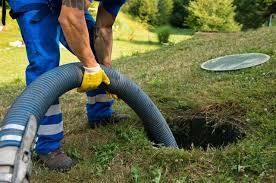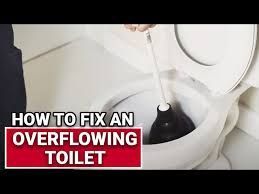How to Pet-Proof Your Plumbing
If you’ve ever watched your dog paw at a toilet or your cat explore the underside of your sink, you already know—pets and plumbing don’t always mix. As much as we love our furry companions, their natural curiosity can spell trouble for your home’s plumbing system. From clogged drains caused by pet hair to chewed pipes, scratched fixtures, or accidental flooding, pets can unknowingly wreak havoc beneath your floors and behind your walls.
But don’t worry—this isn’t a reason to panic or banish your pets to the backyard. With a little planning, a few smart habits, and a basic understanding of where pets and pipes intersect, you can create a home that’s both pet-friendly and plumbing-safe. This guide will walk you through the most common plumbing issues pet owners face, the risks involved, and how to prevent them with practical, real-world solutions.
How To Repair Your Plumbing After a Hurricane or Flood
Why Pets Pose a Threat to Plumbing (And What You Might Overlook)
At first glance, it may seem strange to think that your dog or cat could cause plumbing problems. After all, they're not turning faucets or flushing toilets. But their behavior—especially when unsupervised—can create issues that grow silently over time.
For example, dogs often chew out of boredom or anxiety. PVC pipes, flexible hose connectors, and exposed plumbing under sinks can look like perfect chew toys. A single puncture can lead to slow leaks or even sudden pipe bursts.
Cats, on the other hand, are expert explorers. They crawl into cabinets, knock over cleaners, and sometimes nest near warm appliances. They might scratch at flexible pipe covers, drag things into drains, or drink from toilets laced with chemical cleaners—leading to both plumbing and health emergencies.
Even their grooming habits can be a problem. If you bathe your pets at home, their shedding fur and dander can clog drains faster than you’d expect. Add in muddy paws and pet shampoo residue, and your bathroom plumbing takes a hit.
The Hidden Risks of Not Pet-Proofing Your Plumbing
The damage pets cause to your plumbing system isn’t always immediate or visible. In many cases, small issues build over time, eventually leading to costly repairs.
Let’s say your cat keeps batting at the exposed plastic pipe beneath the bathroom sink. One day, a small crack forms. You don’t notice it right away, but behind the vanity, water slowly drips onto your wooden floors. Weeks later, you find mold, warped wood, and a repair bill that could’ve been avoided with a simple pipe cover or cabinet lock.
Or imagine bathing your dog in the tub once a week. Each time, a bit of fur and dirt gets washed down the drain. It takes months, but eventually the drain clogs completely. Now you’re stuck with standing water, unpleasant smells, and a professional plumbing call.
Worst-case scenarios? A dog chews through a water pipe and floods the laundry room. A curious puppy knocks over a bottle of drain cleaner, which corrodes pipes and endangers their health. These are real risks with real consequences.
Start With Awareness: Know Where Your Plumbing Is Most Vulnerable
Pet-proofing your plumbing starts with knowing where the problems are most likely to occur. Focus on areas where your pet has free access and where plumbing is most exposed or delicate. These usually include:
- Under-sink cabinets
- Bathrooms (especially toilets and tubs)
- Laundry rooms with exposed hoses
- Outdoor hose bibs or sprinkler systems
- Basements with water heaters or utility sinks
Take a slow walkthrough of your home and try to see it from your pet’s perspective. What’s reachable? What’s chewable? Where might they be drawn to by smell, noise, or curiosity? Once you’ve identified these zones, you’re ready to take action.
Pet-Proofing Step-by-Step: Practical Changes You Can Make Today
Let’s break down the key ways you can protect your plumbing system from your pets, one room at a time.
1. Secure Cabinets and Under-Sink Plumbing
Most bathroom and kitchen plumbing is tucked inside cabinets—easy for humans to ignore, but not for pets. Install child-proof locks or magnetic latches on any cabinet your pet can open. Not only does this protect pipes, but it also keeps dangerous cleaners or small items out of reach.
For exposed pipes, especially plastic ones, use pipe sleeves or protective covers. These are inexpensive, easy to install, and prevent bite marks, scratching, and accidental disconnections.
2. Protect Your Drains During Bath Time
If you bathe your pets at home, never let the water drain without using a hair catcher or drain trap. These simple mesh filters catch fur before it enters your plumbing system. Clean them after each use to avoid buildup.
Also, rinse muddy paws outside before using the tub or sink. Dirt, leaves, and small rocks can clog drains or damage pipes over time. And try using pet-specific shampoos that rinse cleaner than human products—they leave less residue in your pipes.
3. Keep Toilet Lids Closed
Some pets, especially dogs, are drawn to toilets. It’s a water source, after all. But drinking from the toilet can be dangerous if you use chemical cleaners or bleach tablets. It can also cause unnecessary wear on your plumbing if pets regularly nudge the lid or handle.
Make a habit of keeping toilet lids closed and using pet-safe cleaners. If your dog is persistent, consider a toilet lid lock or keeping the bathroom door shut altogether.
4. Protect Outdoor Fixtures
Outdoor faucets, irrigation systems, and hoses are prime chew targets, especially for teething puppies. Use hose bib locks, anti-chew spray, or protective tubing around sprinkler heads and hose connections.
If your pet digs in the yard, make sure they’re not exposing underground pipes. Redirect digging behavior with training, toys, or designated dig spots. A single deep hole could damage buried lines—especially in older homes.
5. Monitor Laundry Room Hoses
The flexible rubber hoses connecting your washing machine are easy to chew and even easier to damage. Replace them with stainless steel braided hoses—they’re more durable and less tempting for dogs. If possible, block access to the laundry area entirely or build a small enclosure around exposed plumbing.
A homeowner in Toronto had just adopted a large, energetic golden retriever. Within a week, the dog had discovered the laundry room and decided the washing machine’s water hose made a great chew toy. The homeowner noticed a small leak the next day and called in a plumber, who suggested replacing the damaged rubber hoses with stainless steel braided versions—at a cost of less than $20.
A few months later, the same dog tried again—but this time, the tougher hose held up. If the leak hadn’t been spotted early, it could’ve caused water damage to the walls and floor, easily reaching hundreds in repairs. All from a curious puppy and a little hose.
The Importance of Regular Plumbing Maintenance
Expert Advice: What Plumbers Recommend for Pet Owners
According to many plumbing professionals, prevention is key. Pet-related damage is rarely due to faulty pipes—it’s about exposure, access, and habits. The best way to avoid disaster? Think ahead.
Plumbers also recommend routine checks. Inspect under-sink pipes, toilet bases, and laundry connections every few months. Look for bite marks, signs of moisture, or loose fittings. A quick glance now can save a headache later.
And always ask your plumber about pet-safe plumbing solutions during home upgrades. Some newer fixtures even come with chew-resistant coatings or built-in drain protection—worth asking about if you’re remodeling.
Wrap-Up: Happy Pets, Healthy Pipes
At the end of the day, you don’t have to choose between a safe home and a pet-friendly one. You can absolutely have both—it just takes a little awareness and a few simple changes.
By understanding where pets and plumbing overlap, being proactive about protecting vulnerable areas, and staying consistent with maintenance, you can prevent small problems from turning into major headaches. Your furry companions will still get to explore, play, and be their curious selves—while your plumbing stays intact and stress-free.
Because peace of mind starts at home—and it’s even better when you’re sharing it with the ones you love (fur and all).




